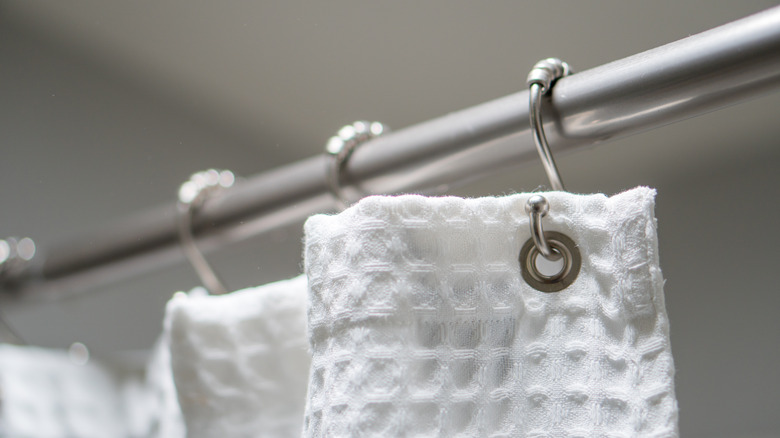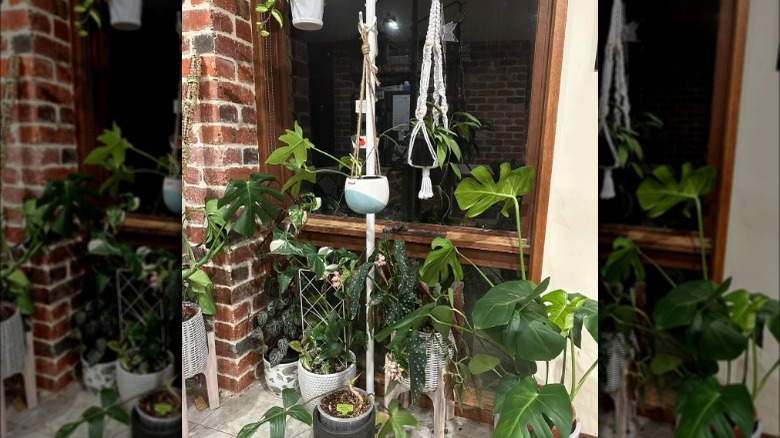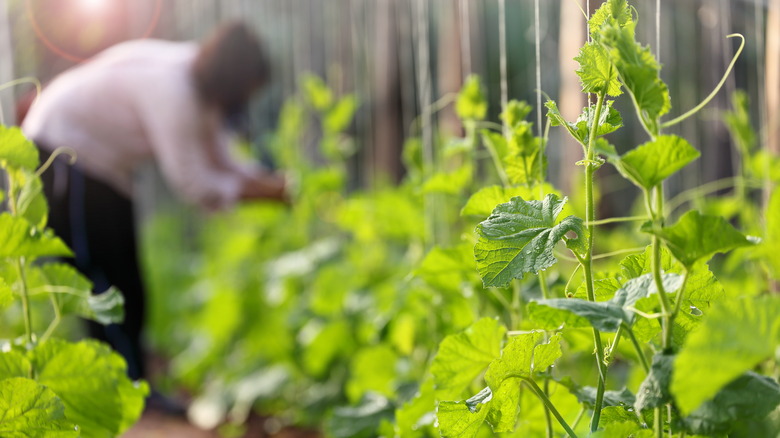Your Old Curtain Rod Can Serve An Essential Purpose In The Garden
Providing stability is essential for the health and well-being of many indoor and outdoor plants. Structures, such as stakes, trellises, and cages, play a crucial role in maintaining the structural integrity of plants. This ensures that plants remain upright and supported, especially when they grow taller or bear heavy fruits. Without proper support, plants can become weak, bend, or even collapse under their weight, leading to damage. Using an old curtain rod can work as a perfect solution to create an aesthetically-pleasing DIY support stake.
This trick can also be helpful outdoors. Vertical structures protect plants from environmental factors such as strong winds or heavy rain. Exposure to these elements can cause physical damage to the plants, break their branches, or uproot them completely. By providing stability, plants can withstand adverse weather conditions, reducing the risk of damage and ensuring their longevity. Curtain rods are often made of rust-resistant materials that can hold up against rain. Moreover, they can help promote better air circulation and light exposure for plants. Plants with support can be spaced out and properly ventilated, allowing sunlight to reach all parts of the plant, facilitating improved photosynthesis and better nutrient absorption.
Use a curtain rod as a plant pole
Repurpose a used curtain rod to provide structure and support for indoor plants. The plants that would benefit from this setup are trailing or climbing plants that have long vines or tendrils and require vertical support to grow properly. Such plants include pothos, philodendrons, or certain species of ivy.
Choose a pot with a wide and sturdy base to ensure stability. It should be large enough to accommodate the plant's root system and allow space for the rod. Fill the pot with well-draining potting soil, leaving room at the top for the indoor plant. Gently remove the plant from its original container and place the plant in the prepared pot, positioning it near the center. Insert the curtain rod into the pot, pressing it firmly into the soil beside the plant. Using plant ties or soft twine, carefully tie the vines or tendrils to the curtain rod at various points along its length to provide support and encourage the plant to climb or trail along the rod as it grows. Regularly adjust the ties or twine to ensure they are not too tight or constricting.
The curtain rod becomes a sturdy and versatile support structure, allowing the plant to grow vertically. It not only adds aesthetic appeal but also helps prevent the plant from becoming tangled or overcrowded. By utilizing a used curtain rod in this manner, you can create an attractive and functional display for your indoor trailing or climbing plants.
Using a curtain rod in your outdoor garden
A curtain rod also makes a great crossbeam for a string trellis for tall plants in your garden, such as tomatoes or peppers. To do so, select a suitable location, preferably a sunny area in your garden or balcony, where the plants will receive at least six to eight hours of direct sunlight per day. Ensure that the location allows for proper airflow and access to water.
Place the two vertical beams, either wood or galvanized electrical metallic tubing, securely in the ground, spaced apart at a distance that accommodates the desired width of your plants. The beams should be tall enough to support the full height of the tomato plants when they reach maturity, so about 6 to 8 feet tall should suffice. Attach the curtain rod horizontally between the two vertical beams at the desired height by using strong twine or rope to create a square lashing.
Finally, tie one end of a strong gardening twine or string to the curtain rod. Guide the string downwards toward the ground and pin it to the soil with a garden staple. Then gently wrap the string around the main stem of the plant twice at ascending intervals. As the plants grow, continue to secure the stems to the string, maintaining a slight tension. Thus, by repurposing a curtain rod and installing two vertical beams, you can create a sturdy and functional trellis system that maximizes space and helps your tomatoes thrive.


